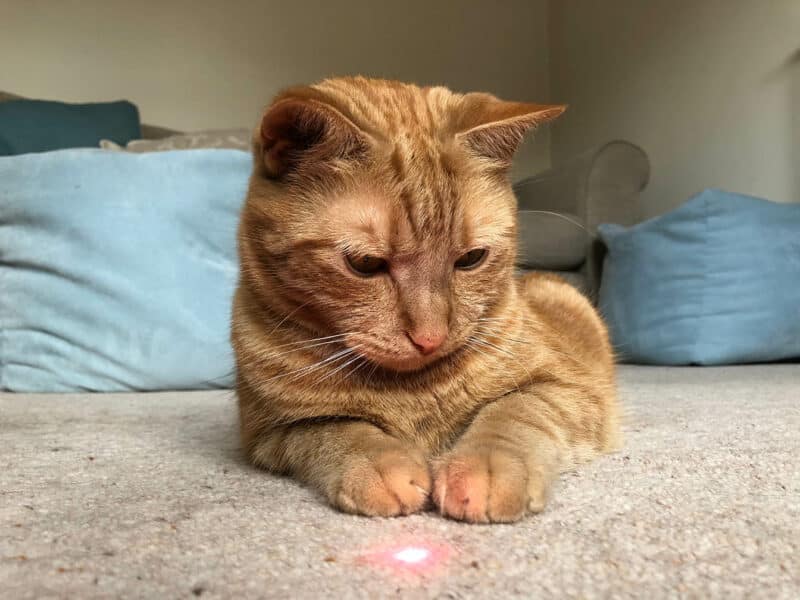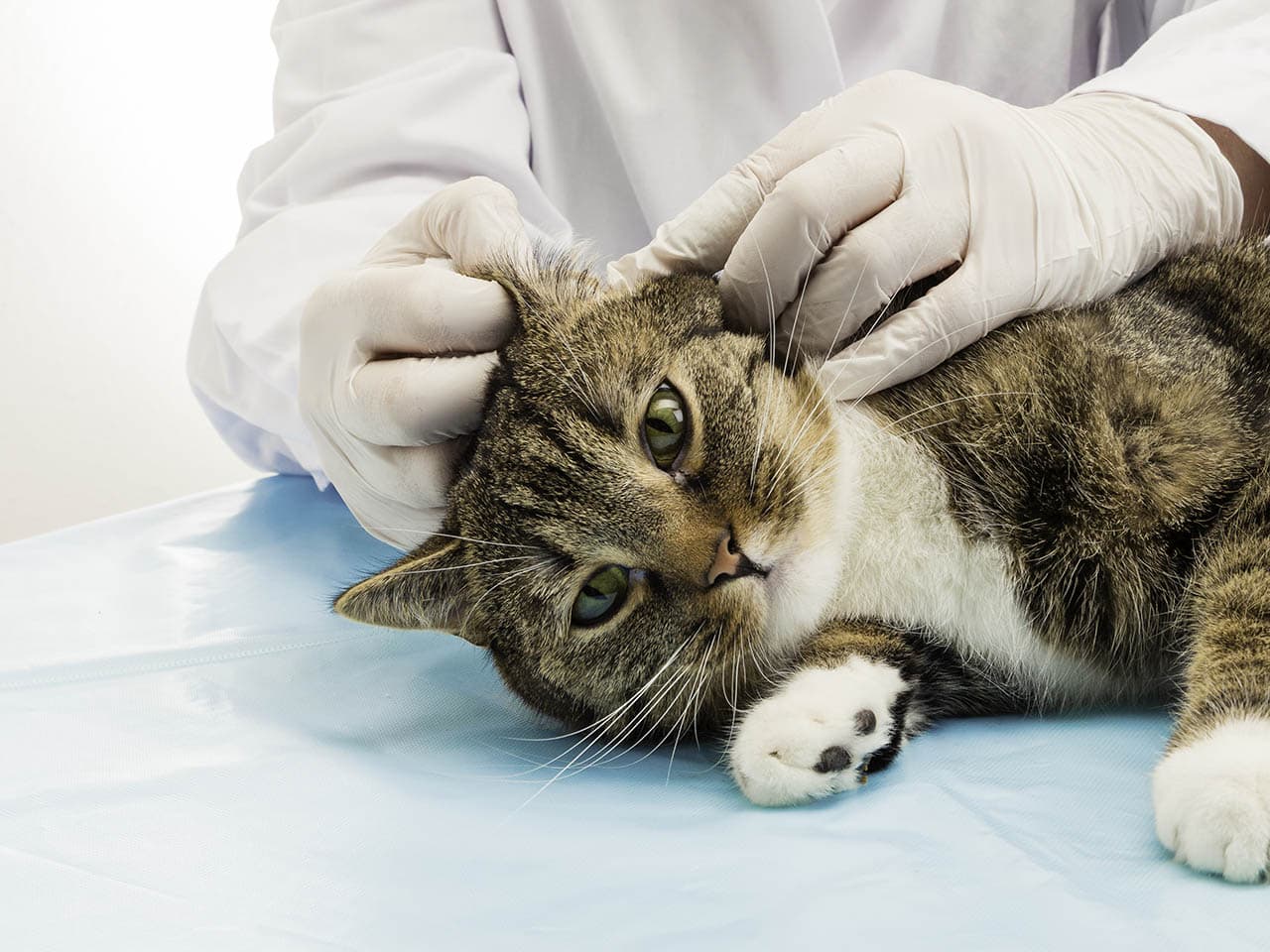For cats, laser pointers are incredibly entertaining but sometimes frustrating since they can’t catch the beam. Most felines can’t help but chase the beam of red or green light around the floor, no matter their age or inclination to play. Why do cats seem obsessed with laser pointers? Cats like laser pointers because their instinct is to chase after anything that moves. In this article, we’ll discuss the scientific reasons that explain why cats love chasing lasers.
A Cat on the Hunt
Why are cats instantly inclined to follow a laser pointer?
Cats are predatory animals, and they are made to be top-notch hunters. Their instinct is to chase anything that moves quickly around them since something in their brains tells them it is prey. Almost all species of cats, including large wild cats, are more inclined to chase after something that moves. Coincidentally, this is why it seems odd to us when prey doesn’t immediately run in nature documentaries. Staying perfectly still is less likely to entice a cat to chase!
A cat’s predatory instinct is to chase anything that moves quickly. It is ingrained into their very anatomy. House cats are not far from their wild descendants, the African and European wild cats, and their hunting instinct is still strong. In addition, pet cats that are well-fed still enjoy hunting, and do it for enrichment and fun even if they are full. They are, after all, opportunistic hunters.
Therefore, a quick moving laser pointer that appears out of nowhere and rapidly darts around is sure to catch the attention of a curious cat. What ensues is well documented all over the internet, a cat going crazy trying to catch the dot as it moves around.
Cats’ Eyes: Laser Sharp
An eye has several functioning parts, including the retina. The retina is at the back of the eye and captures incoming photons (light particles) and transmits them along neuronal pathways as both signals for the brain to perceive a visual picture.
The retina contains both cones and rods, each specialized for different visual tasks. Cones are more active for vision at higher levels of light and are capable of color vision. Rods are responsible for vision at low light levels and they do not mediate color vision. In addition, rods are responsible for motion detection. Cats have a high number of rods, which means that they are able to detect rapid movement (a laser pointer) because their retina is optimized for this.

The Ethics & Safety of Laser Pointers
Though cats are notorious for chasing after laser pointers, there are ethical concerns with allowing cats to chase a laser pointer.
Safety Concerns
As a safety precaution, you should never point a laser directly into an eye. Whether the eye belongs to an animal or a human, even low-powered lasers can cause eye damage if the beam enters into the pupil and focuses on the retina.
You should never use a cat laser toy outdoors or point it out a window, at people, or at cars or planes. Cat lasers are indistinguishable from laser sights on guns or more powerful lasers that can cause eye damage, even from long distances. Many places also prohibit the public use of lasers of any kind.
Mental Health Concerns
Another concern with lasers is that they can lead to aggression issues and frustration in cats. Persistently chasing after a laser without actually catching it can lead to a frustrated animal. Many times, a cat is very focused and at a high state of energy when they chase a laser. If the game suddenly ends, they could potentially chase, bite, and scratch a person or other animal in the house. This is also referred to as redirected aggression. For these reasons, laser pointers are not considered the best toys for cats. Other toy options might be better and safer for most cats.
Conclusion
A small beam of light moving quickly on the floor or wall is too tempting for most cats to ignore. Felines enjoy playing with laser pointers because they have a strong instinct for hunting, and their eyes are designed to detect quick movements. However, laser pointers are not without their concerns, and recent studies have shown that other toys might be more appropriate for your pet.
Featured Image Credit: Laurav1984, Shutterstock











